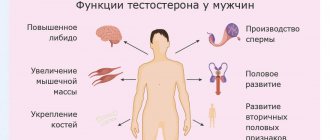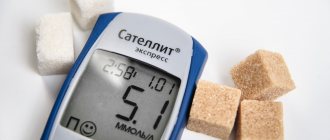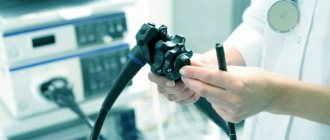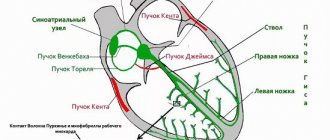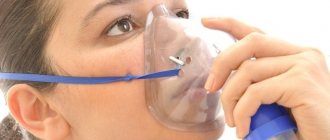Indications and contraindications for the procedure
Indications for spirometry:
- diagnosis of pulmonary failure;
- systematic monitoring of airway ventilation in order to timely detect disease progression;
- checking the effectiveness of the completed course of treatment for bronchial obstruction;
- differential diagnosis of heart and pulmonary failure;
- detection of respiratory failure during clinical observation in persons at risk;
- medical examination for employment in jobs that require large physical resources (military);
- provocative tests, when the degree of sensitivity of the bronchi to allergens is determined by inhalation (for bronchial asthma);
- bronchodilator tests are a method for determining the reversibility of obstruction.
Breathing is not assessed in a state of severe intoxication of the body, with high body temperature, suffocating cough. These symptoms prevent the test from being carried out efficiently and reliably. Diagnosis is contraindicated for pregnant women with toxicosis, as well as throughout the second half of pregnancy.
The spirometry technique is contraindicated if the patient has a history of the following serious illnesses:
- myocardial infarction in the acute stage;
- sharply progressive angina pectoris with more frequent attacks;
- hypertensive crisis;
- acute disturbance of blood supply to the brain;
- Stage 3 circulatory failure.
How is it carried out?
Lung volume measurements are recorded using a device called a spirograph. A special apparatus records the indicators, which are presented in the form of a graph, after which the doctor deciphers the results obtained during the study. There are many options for spirographs - mechanical, water, computer, stimulating, but usually in modern medical institutions the following 2 types are used:
- Computer. It is one of the most accurate. It is a device with ultrasonic sensors that reliably record the parameters of the patient’s respiratory system.
- Plethysmograph. It is considered the most accurate spirograph to date. The device is designed in the form of a cabin, where the patient enters and sits down. Ultra-precise sensors provide the highest reliability of the lung examination method.
In some cases, the procedure is performed on a patient with medications. Such studies are especially significant in the diagnosis of bronchial asthma, since during the disease the exhalation rate significantly decreases. There are 2 main methods of drug examination - bronchodilator and provocative tests. Their essence is as follows:
- A spirogram with a bronchodilator helps assess how much easier it is for a patient to exhale after taking a medication that dilates the bronchi. If the dynamics are positive, we can conclude that the person suffers from a narrowing of the respiratory passages inherent in bronchial asthma, if negative, the diagnosis is not confirmed.
- A provocative test is carried out when a person does not have obvious respiratory problems at the time of the spirogram. The doctor may suggest that the patient take a drug to provoke bronchial spasm, which does not occur in people without asthma. For the same purpose, before the spirogram, the patient can perform physical activity.
The algorithm for carrying out the procedure is the same in all institutions where spirograms are performed. The method of conducting a diagnostic procedure may differ depending on the individual characteristics of the patient’s body. Changes in the spirogram process can be influenced by health indicators and age. For example, if the patient's condition is severe, the patient may undergo the procedure while lying down.
The approach is different when a child is given a lung spirogram. It is difficult for children to follow all the doctor's instructions correctly. To obtain reliable information about lung function indicators, it is necessary to involve specially trained workers who can clearly and clearly explain to the child his tasks while recording a spirogram.
Before starting the study, the doctor examines the patient and studies his hospital record. The specialist always asks whether the person is undergoing any drug therapy, which may affect the reliability of the results obtained. After clarifying all the details, the doctor will explain how to correctly perform breathing maneuvers.
Stages of the procedure
- The patient takes a comfortable position in the chair. Hands are placed on the armrests, the back is straightened, the chin is slightly raised.
- The doctor puts a special clip on the person’s nose, which should not allow excess air to pass through.
- A disposable mouthpiece is placed on the spirograph. The patient wraps his mouth tightly around the mouthpiece and slightly presses the tip with his teeth.
- First, the patient needs to breathe deeply. Then the doctor will ask you to take a maximum breath and force your exhalation. The patient needs to inhale and exhale as required by the specialist, trying to follow the instructions as clearly as possible.
A spirogram is a fairly quick procedure and lasts longer than 20-30 minutes in rare cases. When to repeat the procedure and whether to do it again is determined by the doctor. Depending on the stage of the lung disease, a spirogram may be prescribed every few months or several years in order to monitor the course of the pathology and record changes in the degree of impairment.
An important type of spirogram is a home form of monitoring the condition of the lungs - peak flowmetry. Its main goals are to assess the effectiveness of the chosen therapeutic technique for bronchial asthma, monitor the approach of attacks, and analyze the individual characteristics of the occurrence of exacerbations. For the study, a small spirograph is used, which determines the speed of air flow during exhalation. Changing the indicator allows you to catch the moments of the onset of exacerbations, when there are no symptoms yet, and avoid hospitalization.
What to expect from a spirometry test?
The test works by measuring the flow of air into and out of the lungs. To take a spirometry test, you sit and breathe into a small machine called a spirometer. This medical device records the amount of air you inhale and exhale and the rate at which you breathe. Spirometry is a type of pulmonary function test (PFT), a non-invasive procedure that provides important information about how well the lungs are working. Specifically, it shows how much air is moving through your lungs and how fast you are breathing through the tube.
Categories
AllergistAnesthesiologist-resuscitatorVenereologistGastroenterologistHematologistGeneticGynecologistHomeopathDermatologistPediatric gynecologistPediatric neurologistPediatric urologistPediatric surgeonPediatric endocrinologistNutrologistImmunologistInfectious disease specialistCardiologistCosmetologistSpeech therapistElorologistMammologistMedical lawyerNarcologistNeurologistNeurosurgeon NephrologistNutriciologistOncologistOncourologistOrthopedist-traumatologistOphthalmologistPediatricianPlastic surgeonProctologistPsychiatristPsychologistPulmonologistRheumatologistRadiologistSexologist-AndrologistDentistTherapistUrologistPharmacistPhytotherapistPhlebologistSurgeonEndocrinologist
FVC test (forced vital capacity)
FVC = FVC (FVC = forced vital capacity)
- (Tiffno sample).
Forced vital capacity of the lungs is the volume of air exhaled during the fastest and most powerful exhalation. FEV05 (FEV05 = forced expiratory volume in 0.5 sec)
- forced expiratory volume in 0.5 seconds
FEV1 (FEV1 = forced expiratory volume in 1 sec)
- forced expiratory volume in 1 second - volume of air exhaled during the first second of forced expiration.
FEV3 (FEV3 = forced expiratory volume in 3 sec)
- forced expiratory volume in 3 seconds
FEVpos = OPOS = OPOS (FEVPEF)
- forced expiratory volume at which POS is achieved (peak volumetric velocity)
MOS25 (MEF25 = FEF75 = forced expiratory flow at 75%
) - instantaneous volumetric flow rate after exhalation 25% FVC, 25% counted from the beginning of exhalation
MOS50 (MEF50 = FEF50 = forced expiratory flow at 50%)
- instantaneous volumetric flow after exhalation 50% FVC, 50% counted from the beginning of exhalation
MOS75 (MEF75 = FEF25 = forced expiratory flow at 25%)
- instantaneous volumetric flow rate after exhalation 75% FVC, 75% counted from the beginning of exhalation
SOS25-75 (MEF25-75)
- average volumetric flow rate in the range between 25% and 75% FVC
SOS75-85 ( MEF75-85)
- average volume flow rate in the range between 75% and 85% FVC
SOS0.2-1.2
- average volume flow rate between 200 ml and 1200 ml expiratory FVC
POS = POSvyd = PSV
(peak expiratory flow)
(PEF = peak expiratory flow)
- peak volumetric expiratory flow
MPP (MMEF = maximal mid-expiratory flow)
- maximum half-expiratory flow
TFVC = E_TIME = expiratory time
- total expiratory time FVC
TFVC = IVP = Tvd (I_TIME = inspiratory time)
- total inspiratory time FVC
TFVC/TFVC
- ratio of expiratory time to inhalation time
TPOS = TPOS (TPEF)
- the time required to achieve the peak volumetric expiratory flow rate
MTS (average transit time) = SPV (average transition time) = MTT (mean transition time)
- the value of this time is at the point, the perpendicular from which forms two figures of equal area with the spirographic curve
FVC (FIVC = FVCin = forced inhaled vital capacity)
- forced vital capacity of the lungs
FEV05vd (FIV05 = forced inspiratory vital capacity in 0.5 sec)
- forced inspiratory volume in 0.5 seconds
FIV1vd (FIV1 = forced inspiratory vital capacity in 1 sec)
- forced inspiratory volume in 1 second
FEV3vd (FIV3 = forced inspiratory vital capacity in 3 sec)
- forced inspiratory volume in 3 seconds
PIF (PIF = peak inspiratory flow)
- peak inspiratory volumetric flow rate
FVCin = forced inspiratory vital capacity (FIVC = FVCin = forced inspiratory vital capacity)
- forced inspiratory vital capacity
MOS50vd (MIF50)
- instantaneous volumetric flow rate at the moment the inspiratory FVC volume reaches 50%, 50% is counted from the beginning of inspiration
PSA (BSA = body surface area)
- body surface area (m2)
IT = FEV1/VC (FEV1/VC = Index Tiffeneau)
- Tiffno index
IG = FEV1/FVC (FEV1/FVC = Index Gaenslar)
- Genslar index
FEV3/FVC (FEV3/FVC)
- ratio of FEV3 to FVC
FEV1vd/FVC (FIV1/FVC)
- ratio of FEV1vd to FVC
FEV1vd/FVC (FIV1 /FIVC)
- the ratio of FEV1vd to FVC
FEV1/FEV1vd (FEV1/FIV1)
- the ratio of FEV1 to FEV1vd
MOS50/FVC (MIF50/FVC)
- the ratio of the instantaneous volumetric velocity at the moment of reaching 50% of the expiratory FVC volume to the forced vital capacity of the expiratory lungs
MOS50/ VC (MEF50/VC)
- the ratio of the instantaneous volumetric velocity at the moment of reaching 50% of the expiratory FVC volume to the vital capacity of the expiratory lungs
MOS50/MOS50vd (MEF50/MIF50)
- the ratio of the instantaneous volumetric velocity at the moment of reaching 50% of the expiratory FVC volume to a similar parameter during inhalation
Avyd (Aex = AEFV)
— area of the expiratory part of the “flow-volume” curve
Авд (Аin = AIFV)
— area of the inspiratory part of the “flow-volume” curve
А
— total area of the flow-volume loop
How is the spirometry procedure performed?
The patient sits in front of the spirometer. A disposable mouthpiece is attached to the device. The subject tightly clasps his lips and lightly presses the mouthpiece with his teeth. To fully record the volume and speed of inhaled and exhaled air, the medical worker applies a nose clip to the patient through an individual napkin.
The patient is explained what breathing maneuver needs to be done: maximum calm inhalation and exhalation; calm inhale and exhale as forcefully as possible, etc. Each test is performed three times. Rest between breathing maneuvers is 1 – 2 minutes.
Don't worry if you feel dizzy - this is a normal reaction that goes away after a few minutes.
Details about the procedure
What is spirography, if we consider it in detail? Translated from Greek, “spiro” means breathing and “graphia” means writing, which when combined looks like studying the basic parameters of breathing based on recorded data. That is, it turns out that spirography is the study of external respiration function (ERF). The procedure for measuring breathing parameters without drawing up a spirogram is called spirometry, and it is, as a rule, the first part of a general examination.
Lung spirography allows you to diagnose diseases of the respiratory system of varying severity and origin. During the procedure, the nature and level of obstruction (narrowing of the lumen of the bronchi) is determined. The study serves as a method for assessing and monitoring the effectiveness of prescribed therapy, and is also used for preventive examinations of athletes and persons whose activities are associated with harmful substances.
There are two types of diagnostic devices - open and closed. When using open-type devices, the patient inhales ordinary air, and closed-type equipment does not involve contact with atmospheric air. A simple model of a closed spirograph represents a sealed vessel with oxygen connected by movable bellows to the recording part of the device.
What preparation is needed?
Before the procedure, the doctor will carefully instruct the patient whether they should avoid using inhaled breathing medications (portable medication inhalers) or taking other medications before the test. You should come to the examination in loose clothing, which will allow you to take a deep breath. If there are belts or straps, tight elastic bands, or a bra, they need to be loosened.
note
Before the test, to make it easier to breathe, you do not need to eat dense, heavy food at least 2-3 hours before the procedure. Otherwise, no special changes in life are required.
general description
Spirography is a method of graphically recording changes in lung volumes during natural respiratory movements and volitional forced respiratory maneuvers. Spirography allows you to obtain a number of indicators that describe lung ventilation. First of all, these are static volumes and capacities that characterize the elastic properties of the lungs and chest wall, as well as dynamic indicators that determine the amount of air ventilated through the respiratory tract during inhalation and exhalation per unit time. Indicators are determined in the mode of quiet breathing, and some - during forced breathing maneuvers.
Indications for spirography:
- determination of the type and degree of pulmonary insufficiency;
- monitoring of pulmonary ventilation indicators in order to determine the degree and speed of disease progression;
- assessment of the effectiveness of course treatment of diseases with bronchial obstruction;
- differential diagnosis between pulmonary and heart failure;
- identification of initial signs of ventilation failure in persons at risk of pulmonary diseases;
- identification of initial signs of ventilation failure in persons working under the influence of harmful production factors;
- performance examination and military examination based on assessment of pulmonary ventilation function;
- bronchodilator tests to determine the reversibility of bronchial obstruction;
- provocative inhalation tests to detect bronchial hyperreactivity.
Contraindications to spirography:
- severe general condition of the patient, which makes it impossible to conduct research;
- severe pulmonary insufficiency that does not allow breathing maneuvers;
- progressive angina;
- acute myocardial infarction;
- acute cerebrovascular accident;
- malignant arterial hypertension;
- hypertensive crisis;
- toxicosis of pregnancy;
- second half of pregnancy;
- stage III circulatory failure.
For most spirographic indicators, there are so-called proper values (ideal indicators for your height, weight, age and gender), i.e. limits of indicator values characteristic of normal respiratory function. The indicators obtained during the study of a particular patient are called actual. Based on the results of comparing the expected and actual indicators, expressed as a percentage, a conclusion is made about the state of the external respiration function. During spirography, up to two dozen parameters can be determined that describe the condition of the upper respiratory tract and lungs, but not all of them are of practical importance.
Interpretation of the main indicators of spirography:
- Forced expiratory volume in the first second (FEV1, FEV1) is the amount of air exhaled by the patient from the lungs in the first second of exhalation. The normal value is at least 80% of the proper value.
- Forced vital capacity (FVC) is the amount of air exhaled from the lungs at maximum speed (forced expiration) after taking the deepest breath possible. Normally it is more than 80% of the required value. For bronchial asthma, COPD and some other diseases it decreases.
- The modified Tiffno index (FEV1/FVC) is the ratio of the two previous indicators. Normally its value exceeds 75%. The Tiffno index decreases significantly with obstruction of the upper respiratory tract, which is the main criterion for diagnosing bronchial asthma, COPD and some other diseases.
- The average forced expiratory volumetric flow rate is 25–75% of FVC (FEV25–75%, FEV25–75%). Normally, its value exceeds 75% of the required value. It is the earliest and most sensitive marker of obstruction of the upper respiratory tract.
- Peak forced expiratory flow (PEF) is the main indicator of self-control in obstructive pulmonary diseases and bronchial asthma. It represents the maximum volume of air exhaled from the lungs in 1 second during a forced (intensified) exhalation after the deepest possible inhalation. Normally, its value exceeds 80% of the required value.
Spirometric data and their characteristics
The result of the study is considered in the analysis of the data obtained:
- FVC – forced vital capacity of the lungs. This indicator sets the largest volume of exhaled air (FEV) at maximum inspiration. It makes it possible to record restrictive violations.
- Vital capacity – vital capacity of the lungs. The difference between the volume of the lungs when inhaling completely and when exhaling completely.
- FEV1 is the forced expiratory volume in the first second.
- Tiffno index - the ratio between FVC and FEV1 indicators as a percentage.
| Reduction | Name | Characteristic |
| BEFORE | tidal volume | volume of air inhaled or exhaled during each act of breathing |
| vital capacity | vital capacity of the lungs | the largest volume of air that can be inhaled during a forced inhalation |
| OO | residual volume | volume of residual air at maximum exhalation |
| District Department of Internal Affairs | inspiratory reserve volume | the largest volume of inhalation that can be exhaled after a normal inhalation |
| ROvyd | expiratory reserve volume | the largest volume of air that can be exhaled after a normal inhalation |
| FVC | forced vital capacity of the lungs | the volume of air that is rapidly exhaled during a maximum inhalation |
| EV | inspiratory capacity | the largest volume of air that can be inhaled after a normal inhalation |
| OFO | residual functional volume | the volume of air that remains in the lungs after a normal exhalation |
| OEL | total lung capacity | volume of air after maximum exhalation |
Related and recommended questions
Decoding the spirogram I would like to know the conclusion of the pulmonologist on the decoding...
Berodual and smoking Please tell me if I used Berodual today, is it possible...
Diagnosis of COPD stage 1. I had an acute respiratory infection and still had a cough with sputum (rarely). I did a CT scan: focal...
I’m tormented by shortness of breath, I can’t breathe deeply. I’m worried about shortness of breath, as if I’m not...
Cough with shortness of breath I haven’t smoked for 10 months, in August I became interested in cycling and started...
What does phlegm coming out in the form of lumps from the throat mean? I’m worried about the constantly accumulating...
Discomfort in the lungs after quitting smoking Doctor! I smoked for 12 years, quit a month ago...
Spontaneous pneumothorax 2 years ago, a right-sided spontaneous pneumothorax occurred...
After quitting smoking, there is no cough. I smoked a pack a day for 28 years! Quit smoking by...
Bronchial obstruction I am 33 years old, and in May I fell ill with bronchitis. A month after...
Smoking, bronchial asthma Dear specialists. I have bronchial asthma. Diagnosis…
Breathing problems consultation For a year now I have been tormented by strange breathing problems. Started with...
Decoding the result of fluorography I received the result of fluorography, the description says:...
Fluorography results Last year, fluorography results showed disc-shaped...
Shortness of breath, attacks of pain when inhaling I suffer from shortness of breath and attacks of pain when inhaling (my...
Shortness of breath and heaviness in the solar plexus area Doctor! I really ask for your help...
Prednisolone My husband has been suffering from bronchial asthma for more than 28 years; he is 55 years old. He uses...
Bronchial asthma In 2009, I developed pharyngitis. I went to doctors and received treatment. IN…
Taking medications for asthma In April I was diagnosed with bronchial asthma, mixed...
Transcript of FVD I have mild chronic bronchial asthma. Currently...
Spirometry: definition and methodology
The study is indispensable to find out:
- The absence or presence of diseases of the respiratory system, when the patient has complaints of cough, shortness of breath, and sputum production.
- What stage of the established disease does the patient currently have and is the treatment effective?
- The degree of influence of environmental factors and bad habits on the bronchi and lungs of the patient.
- The influence of physical activity on the bronchopulmonary system in athletes before training or competition.
Spirometry can be prescribed from the age of six. Conducted in the first half of the day, several hours after breakfast. Immediately before the procedure, the patient must rest for at least 15 minutes in a sitting position. The personnel who will monitor the procedure must instruct the patient, where they talk in detail about the stages of spirography and the actions of the person being examined.
If the patient is taking theophylline medications, they should be discontinued one day before the study, and if inhaled medications, then 12 hours before.
The procedure will not take much time and will not bring pain or discomfort to the patient. A clamp is placed on the person’s nose to prevent air leakage, and the person being examined is connected to the spirograph using a mouthpiece. For 5 minutes the patient breathes calmly and measuredly. Then he exhales as deeply as possible, followed by an inhalation of the same depth, and again, an exhalation, and again, an inhalation. To obtain reliable results, the above cycles are carried out 3 times.
Preparatory activities
Preparation for spirography is very important. The reliability of the results obtained is increased by observing the following rules:
- The study should be carried out on an empty stomach or at least 2 hours after eating a light meal in the morning;
- the day before the examination, stop smoking (or at least 4 hours before), reduce the consumption of caffeine-containing drinks, and do not drink alcohol;
- refuse medications that may distort the indicators;
- select loose and comfortable clothing that does not interfere with breathing;
- half an hour before measurements, remain calm, breathe calmly;
- a patient who uses an inhaler takes it to the procedure;
- Have a handkerchief or napkins with you.
Patients with dentures are not recommended to remove them in order to maintain the usual geometry. If it becomes difficult to seal the tube or the prostheses are poorly secured, the procedure should be repeated without them.
Before starting the study, the medical professional must find out the patient’s data (height, weight) and enter their device, select the spirometer by size, help the patient take the desired position and explain the sequence and rules for performing breathing maneuvers.
Research > Spirography and spirometry
This information cannot be used for self-medication! Consultation with a specialist is required!
What is spirometry?
Spirometry is a research method that allows you to assess the function of external respiration and includes the measurement of volume and velocity indicators. Using spirometry, the following indicators are usually measured: respiratory rate, tidal volume, vital capacity, forced expiratory volume, etc.
The term “spirography” refers to the graphical recording of measurements taken.
How is spirometry performed?
Spirometry is now usually carried out using a computer spirometer, which converts the sensor readings into digital format and automatically makes all the necessary calculations.
The subject's nose is pinched with a special clamp. He has to breathe exclusively through his mouth through a special mouthpiece.
The procedure begins by measuring breathing characteristics at rest. Next, breathing is studied during forced exhalation. The patient then breathes very quickly and deeply to test the maximum possible ventilation of the lungs.
Often at the end of the study, functional tests are performed, for example, a test with drugs that dilate the bronchi.
A repeat study is carried out 3-5 minutes after their use. If external respiration parameters improve or are restored completely, they speak of reversible bronchospasm.
Another functional test is called provocative. The patient is inhaled with histamine, which can lead to bronchospasm and thereby confirm or refute the diagnosis of bronchial asthma.
Where is spirometry performed?
This examination can be completed on an outpatient basis.
Spirometry is carried out by a nurse or a functional diagnostics doctor in a clinic, diagnostic center or any other medical institution that has a spirograph.
What diseases does spirometry detect?
Spirometry reveals diseases that are accompanied by bronchial obstruction (impaired patency of the bronchial tree), namely: bronchial asthma, chronic obstructive pulmonary disease, bronchiectasis.
Deviations from the norm of the indicators obtained as a result of the examination make it possible to judge the absence or presence of a respiratory system disease in a person, the degree of its severity and the reversibility of the condition.
Who needs spirometry?
Patients with bronchial asthma, obstructive bronchitis, bronchiectasis, and long-term smokers need to undergo spirometry. The study is recommended not only to identify these diseases, but also to evaluate the effectiveness of treatment.
Preparing for the study
The study should be carried out strictly on an empty stomach, it is advisable not to drink a lot of liquid.
You should refrain from smoking. If the patient uses inhalers, he should inform the doctor about it. The method is absolutely painless and does not cause any discomfort.
Contraindications to the procedure
There are no absolute contraindications to spirometry.
Spirometry classification
The way the procedure is performed determines its type. Spirometric tests are performed during the following maneuvers:
- normal calm breathing;
- exhale with effort (forced);
- with maximum ventilation;
- with physical activity (before and after it) - dynamic spirometry;
- using special substances - functional and provocative spirometry: with bronchodilators that dilate the bronchi. The method helps to identify hidden bronchospasms, correctly diagnose the disease, determines the reversibility of disorders and the effectiveness of therapeutic techniques;
- with methacholine, which helps to definitively diagnose asthma, identify a predisposition to bronchospasm and hyperresponsiveness.
Modern spirometers make it possible to determine the level of diffusion capacity of the lungs - the gas exchange of oxygen and carbon dioxide between the respiratory organs and the blood.
Additional examination - bronchospirometry. Allows you to separately record indicators in different lobes of the lungs.
Explanation of meanings
The method used to decipher the spirogram is to compare the results obtained with normal values. In this case, the basic values are calculated taking into account gender, height (P, cm) and age (B, number of full years) using the following formulas:
Spirography indicators in the range of 70–80% are considered taking into account the individual characteristics of the patient - age, health status, constitution. In particular, for older people such spirography results may be the norm, but for a younger person they may indicate initial signs of obstruction.
The FEV1/VC ratio is called the Tiffno index. It is used to assess the degree of bronchial obstruction based on a bronchodilator test. An increase in indicators in this case is a sign of bronchospasm, a decrease indicates the presence of other mechanisms of obstruction.
In addition, one of the most commonly used indicators for assessing the condition of the bronchopulmonary system is the depth of breathing. It is measured by a spirograph or calculated by the ratio of MOR to respiratory rate (RR). This parameter varies significantly in a person even in a calm state, regardless of the presence of pathologies (within 300–1000 ml). With low physical fitness or the presence of respiratory dysfunction, increased ventilation of the lungs is usually achieved through rapid shallow breathing. It is characterized by low efficiency, since it does not provide proper ventilation of the alveoli and leads to an increase in “dead space”. A healthy and trained person breathes infrequently, deeply, on average 20 cycles per minute.
Thus, after spirography has been performed, you can look at the results on the spirogram and understand the overall picture of the state of your bronchopulmonary system. But only a specialist can give a professional assessment of the severity of the pathology and the effect of the treatment on it.
- Buteyko gymnastics for bronchial asthma
- Air purifier for allergy sufferers and asthmatics
- Choking due to allergies


